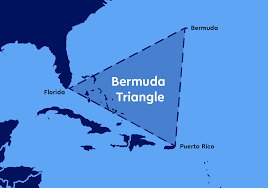The maritime industry plays a crucial role in global commerce, and among its most significant contributors are Very Large Crude Carriers (VLCCs). These colossal vessels are a vital component of the global oil supply chain, transporting massive quantities of crude oil across oceans from oil-producing regions to refineries around the world. The acronym VLCC stands for “Very Large Crude Carrier,” and it represents one of the most impressive feats of engineering in maritime history.
In this blog, we will delve into what a VLCC ship is, its design and features, its importance in the shipping industry, major routes and ports it serves, environmental considerations, and how it is adapting to the evolving energy landscape.
What is a VLCC Ship?
A Very Large Crude Carrier (VLCC) is a type of oil tanker designed to carry crude oil in large volumes. VLCCs typically have a deadweight tonnage (DWT) ranging from 200,000 to 320,000 tons, making them one of the largest categories of tankers in the world, second only to Ultra Large Crude Carriers (ULCCs).
VLCCs are primarily used for long-haul routes due to their immense size. These vessels can carry up to 2 million barrels of crude oil in one journey, which is equivalent to approximately 84 million gallons. Given their size and cargo capacity, they are essential for the cost-effective transportation of oil from producers, such as the Middle East, to major consumers in Asia, Europe, and North America.
Design and Specifications
VLCCs are not just large; they are marvels of marine architecture. Let’s explore some of the key specifications and features:
-
Length: Typically between 300 to 330 meters
-
Beam (width): Around 60 meters
-
Draft: Up to 22 meters when fully loaded
-
Speed: Average cruising speed is around 15 knots (28 km/h)
-
Cargo capacity: Up to 320,000 DWT, or 2 million barrels of crude oil
-
Crew: Usually requires a crew of about 25–30 personnel
The hull of a VLCC is designed to maximize cargo space and ensure structural integrity during rough sea conditions. Most VLCCs have double hulls, which provide an extra layer of protection against oil spills in the event of a collision or grounding, adhering to international safety and environmental standards.
Role in Global Trade
VLCCs are indispensable to the global oil logistics network. Oil-producing nations, such as Saudi Arabia, Iran, Iraq, Kuwait, and the UAE, use VLCCs to export crude oil to refineries located in China, India, Japan, South Korea, and Europe.
Their enormous cargo capacity allows economies of scale in shipping, reducing per-barrel transportation costs. For instance, while smaller vessels need multiple trips to transport the same volume of oil, a single VLCC voyage can accomplish the task more efficiently, albeit with more operational complexity.
VLCCs usually operate between designated deep-water ports and terminals due to their size. Some important VLCC ports include:
-
Ras Tanura (Saudi Arabia)
-
Kharg Island (Iran)
-
Fujairah (UAE)
-
Rotterdam (Netherlands)
-
Singapore
-
Port of Ningbo-Zhoushan (China)
Environmental and Safety Considerations
The massive scale of VLCCs brings significant environmental concerns. The risks of oil spills, ballast water discharge, and emissions are ever-present. Over the years, international regulatory bodies, such as the International Maritime Organization (IMO), have imposed stringent rules on VLCC operations.
Key measures include:
-
Double Hull Design: Mandatory for all new VLCCs after the Exxon Valdez oil spill in 1989.
-
MARPOL Regulations: Govern the prevention of pollution from ships, including oil, sewage, and air emissions.
-
Ballast Water Management Convention: Controls the transfer of marine species through ballast water.
-
Emission Control Areas (ECAs): Limit sulfur emissions and require the use of cleaner fuels or scrubbers.
In response to climate change concerns, newer VLCCs are being equipped with LNG propulsion systems, hybrid engines, and air lubrication systems to reduce fuel consumption and greenhouse gas emissions.
Challenges Faced by VLCCs
While VLCCs are efficient, they face several operational and economic challenges:
-
Port Accessibility: Not all ports can accommodate VLCCs due to their size and draft. Some ports require ship-to-ship transfers or the use of floating storage units (FSUs) to unload cargo.
-
Piracy Risks: VLCCs often pass through high-risk areas such as the Strait of Hormuz, Strait of Malacca, and Gulf of Aden, making them vulnerable to piracy.
-
Fluctuating Oil Prices: The demand for VLCCs is closely tied to global oil prices. A sharp decline can lead to underutilization of fleet capacity and financial losses.
-
Regulatory Compliance: Constantly evolving regulations require shipowners to invest heavily in retrofitting and compliance systems.
Future of VLCCs in a Changing Energy Landscape
With the global push towards renewable energy and the decarbonization of shipping, the future of VLCCs is at a crossroads. However, experts believe that crude oil demand will remain significant for at least the next two decades, especially in developing economies.
To stay relevant, shipbuilders and operators are exploring the following:
-
Green VLCCs: Powered by alternative fuels such as LNG, ammonia, or hydrogen.
-
Smart Shipping Technologies: Use of AI, IoT, and automation to improve navigation, maintenance, and fuel efficiency.
-
Modular Designs: Ships that can be adapted for alternate cargoes, such as biofuels or chemicals.
Conclusion
VLCC ships are among the most powerful engines of global trade, carrying the lifeblood of industrial civilization across oceans. Despite their challenges, their role in energy transportation remains critical. As the shipping industry evolves in response to environmental and economic pressures, the VLCC is also transforming — becoming smarter, cleaner, and more sustainable.
Understanding the significance of VLCCs not only highlights the complexity of the maritime world but also deepens our appreciation for the vessels that quietly fuel modern life from behind the scenes.
